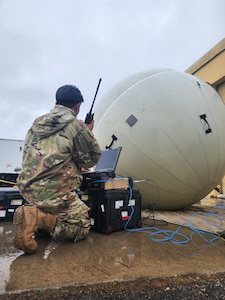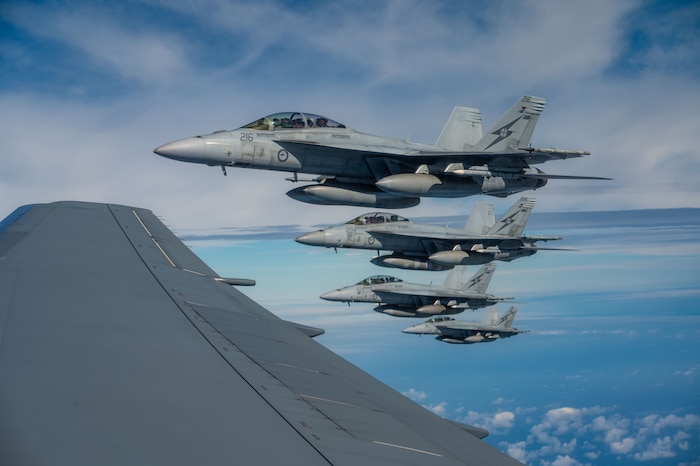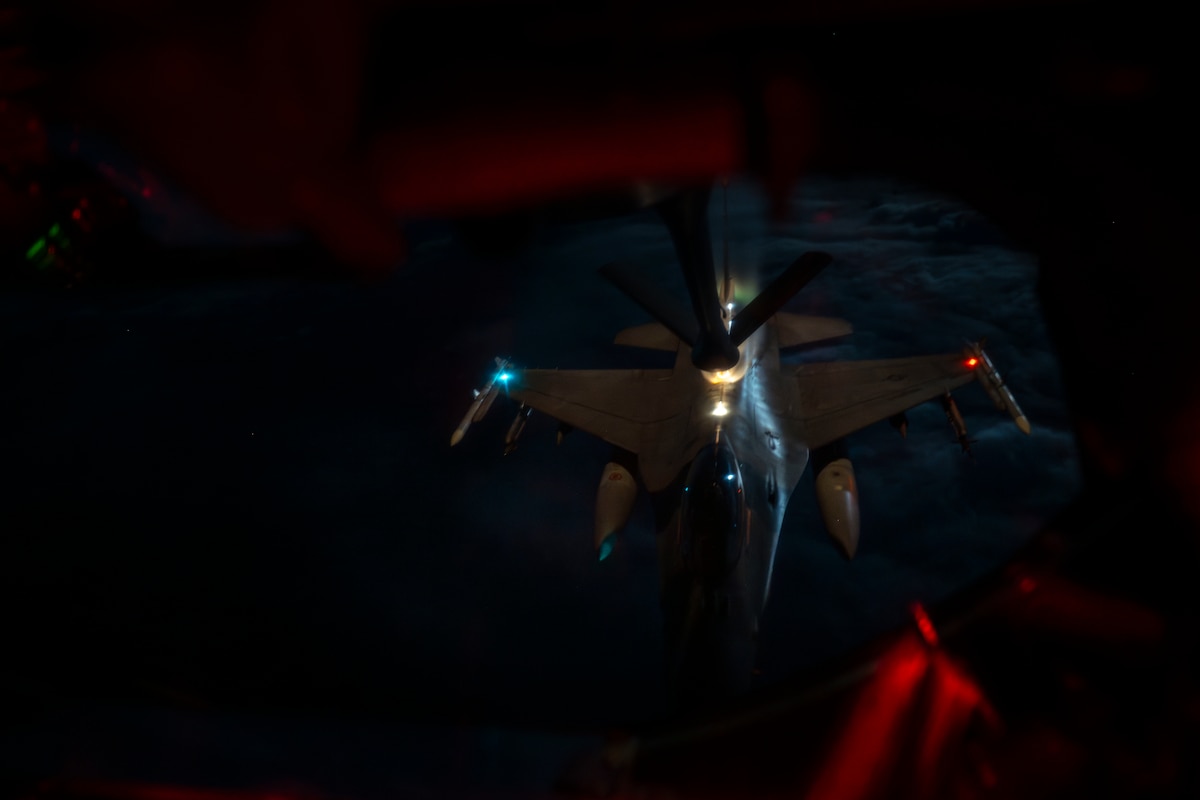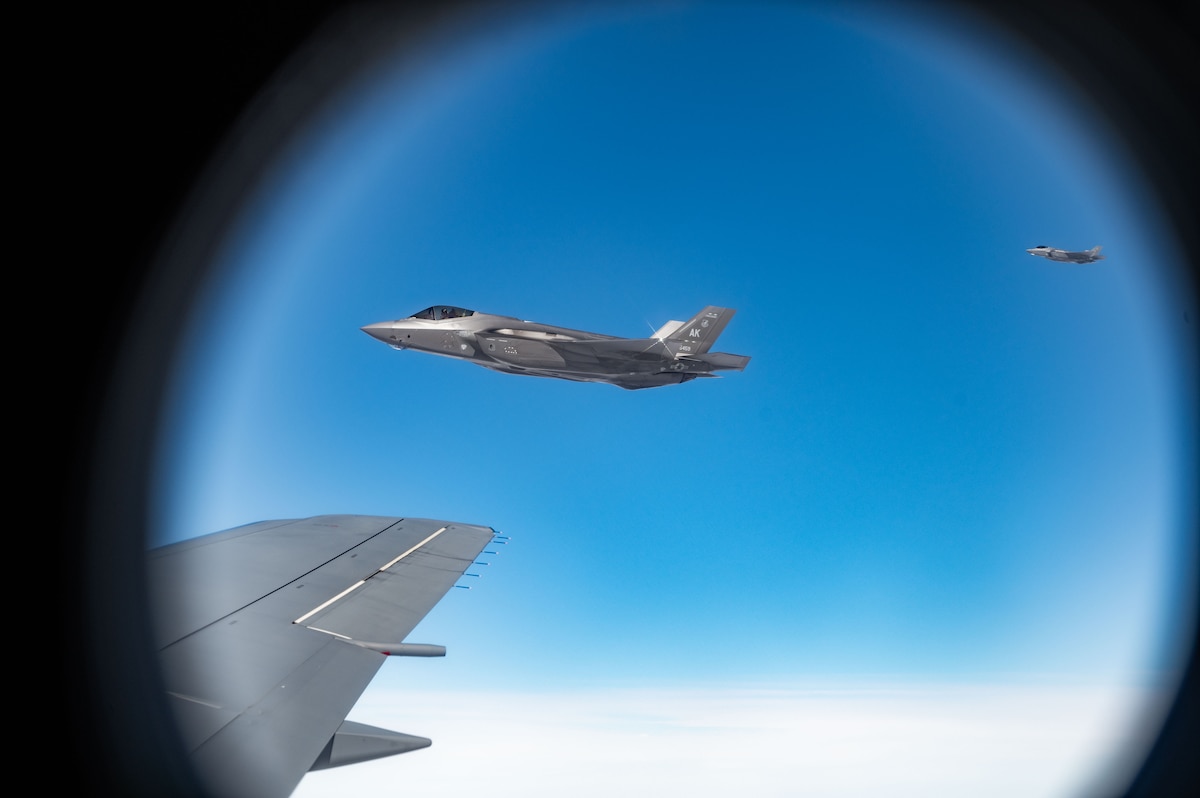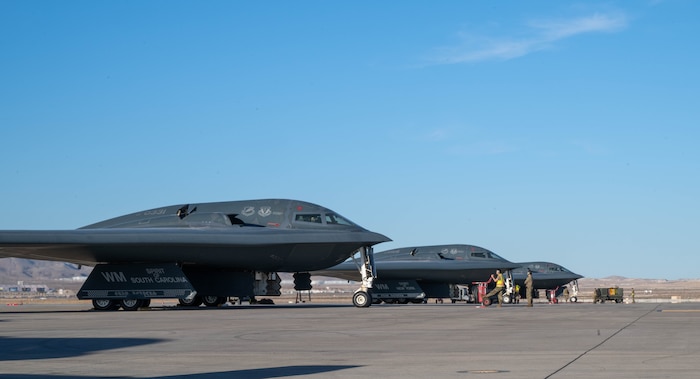The U.S. Air Force Warfare Center recently wrapped up Bamboo Eagle 25-1, concluding a series of coordinated, multi-domain operations that involved more than 10,000 personnel from multiple Air Force major commands, the joint force and allied air forces.
The exercise, which featured over 175 aircraft, spanned several locations - including California, Hawaii, Florida and Guam - and included participants from the U.S. as well as the Royal Air Force, Royal Australian Air Force and Royal Canadian Air Force. The exercise was designed to execute Agile Combat Employment, advance communication as well as command and control tactics and simulate realistic operations in a contested environment.
"Bamboo Eagle provides us an opportunity to align with the warrior ethos mentality," said Lt. Col. Joseph Manglitz, 393rd Expeditionary Bomb Squadron commander. "It's one thing to train at home - and we train hard at home - but it's even better to bring a subset of our base on the road here and work together to generate air power alongside the rest of the combat air force and our allies."
Participants engaged in a series of complex missions designed to simulate the ever-evolving challenges of modern warfare.
"From the perspective of the B-2, this exercise was a real test," Manglitz said. "And when we're able to overcome challenges and succeed in these simulated combat environments, that really bolsters this idea of warrior ethos within each and every one of us."
Back on the ground, maintenance teams worked around the clock to support the distributed operations and ensure that all aircraft remained mission-ready amid the demanding operational tempo.
"It's a tough job, and sometimes it's a thankless job, but the maintenance crews do it anyway," said 1st Lt. Benjamin Brooks, a maintenance officer assigned to the 366th Maintenance Squadron. "They're out in the sun sweating, and it makes me really proud to be able to lead people who are so willing to get the job done and who have so much pride in the work they do."
The multinational nature of the exercise provided additional opportunities for cross-service learning and integration, bringing interoperability to a new level.
"During Bamboo Eagle the E-7A crews had a number of opportunities to integrate with U.S. command and control entities," said RAAF Flt. Lt. Jacob Rolfey, an Air Battle Manager aboard the E-7A Wedgetail. "Based on our previous integration, a number of the tactics and procedures that we have in place are similar, but here at Bamboo Eagle, because of the differences with Agile Combat Employment, we were able to gain a common understanding of how to do this with limited information and still execute effectively."
Adding to that collaborative spirit, multinational leaders emphasized the exercise's role in sharpening dynamic operational capabilities.
"Bamboo Eagle tested our ability to integrate the tactical effects we trained to in Red Flag from dispersed forces and under distributed command and control," said RAF Gp. Capt. Guy Lefroy, UK detachment commander. "Throughout the exercise we developed our people's ability to dynamically deliver air power through empowerment, effective risk management and innovation, ultimately sharpening our individual, service and collective international capabilities to deliver battle-winning effects."
Bamboo Eagle 25-1 provided an advanced, multi-domain and realistic training environment aimed at preparing the U.S. and allied forces for the evolving demands of modern warfare.

